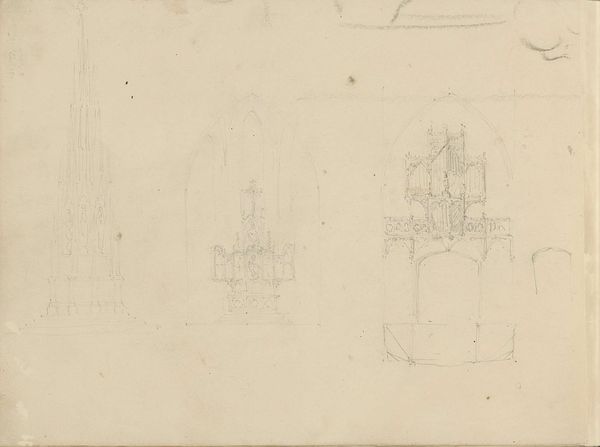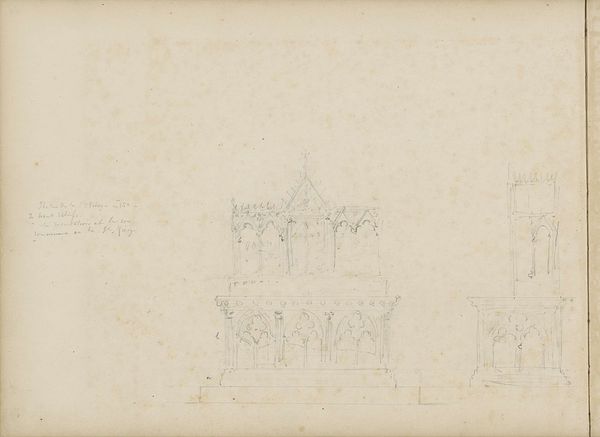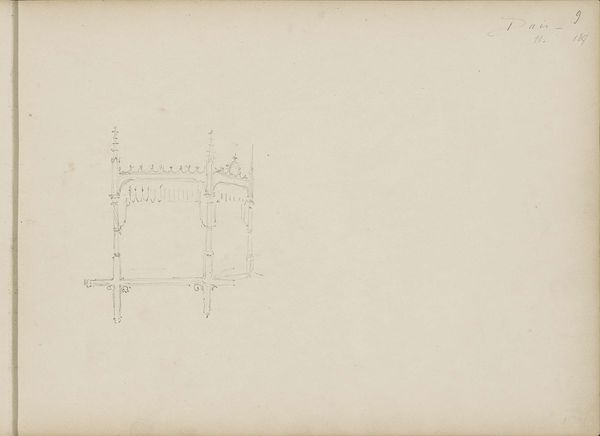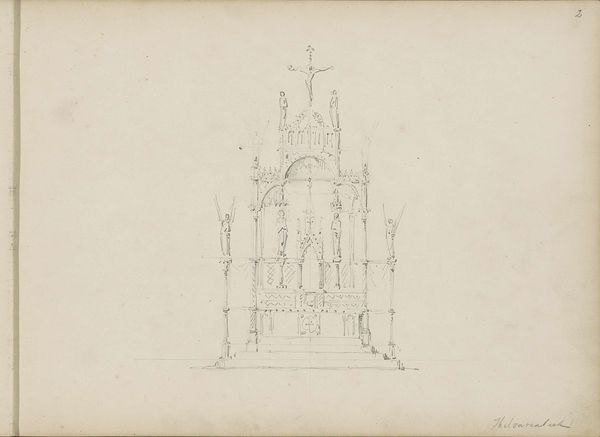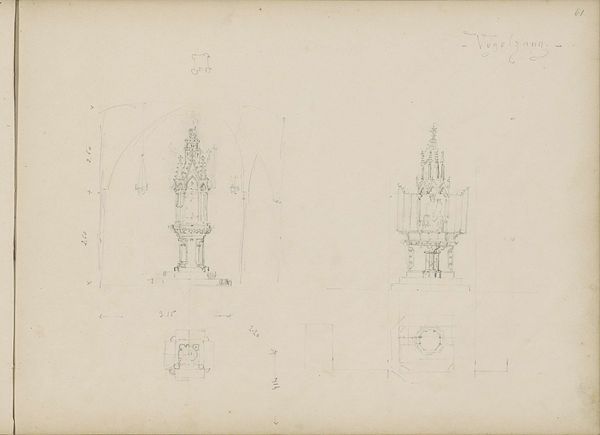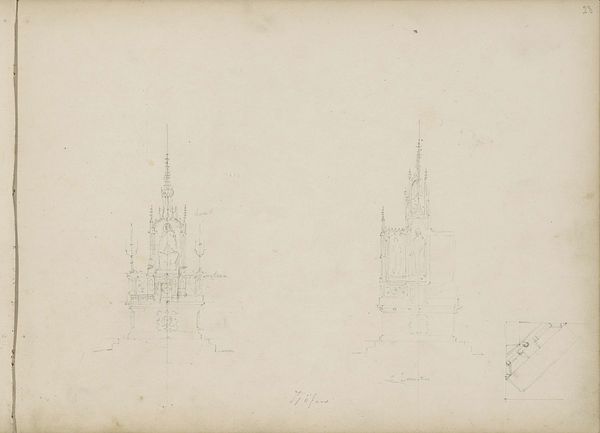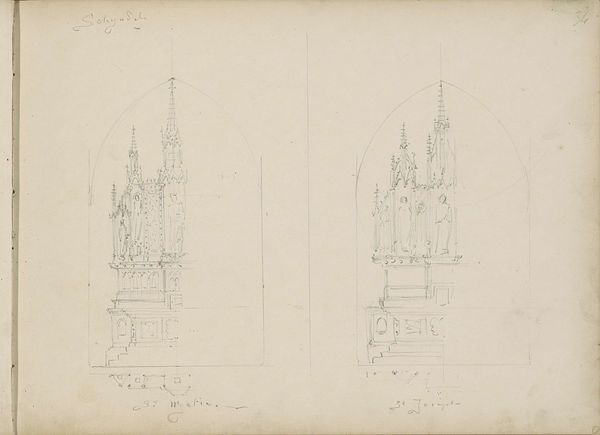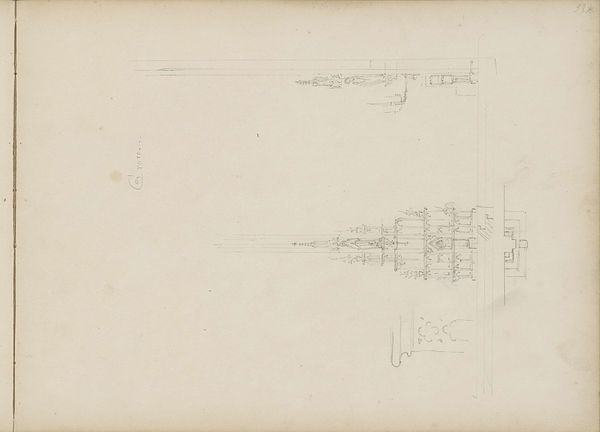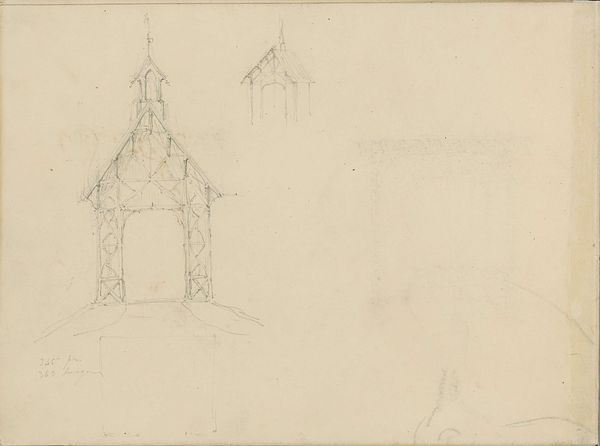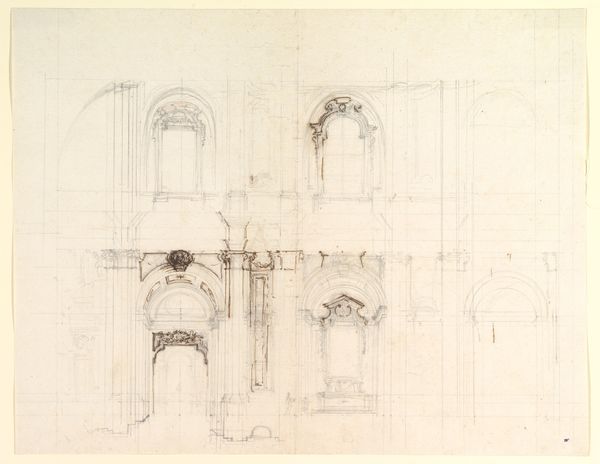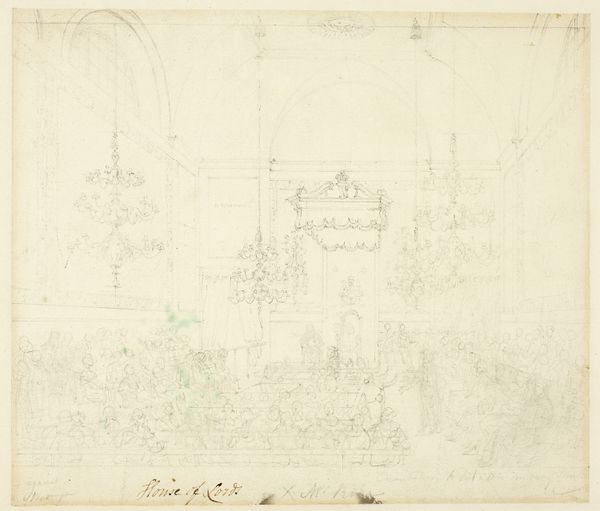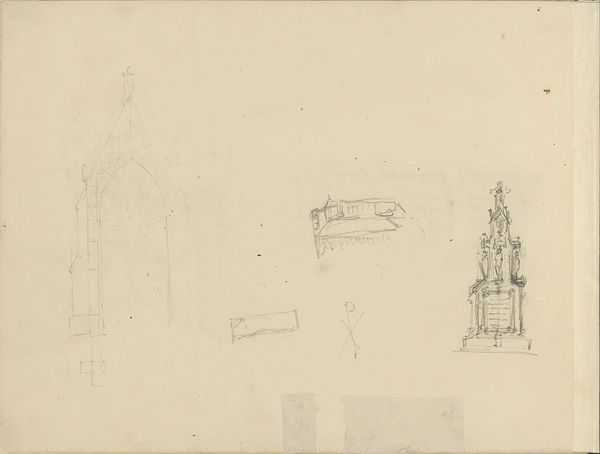
drawing, pencil, architecture
#
drawing
#
amateur sketch
#
aged paper
#
toned paper
#
light pencil work
#
medieval
#
incomplete sketchy
#
hand drawn type
#
personal sketchbook
#
fading type
#
geometric
#
pencil
#
sketchbook drawing
#
history-painting
#
sketchbook art
#
architecture
Copyright: Rijks Museum: Open Domain
Curator: What immediately strikes me about this drawing is its ethereal quality, a faint, ghostly rendering in pencil on what looks like aged paper. There's a lightness, a certain fragility to the lines. Editor: Indeed. This is a study of "Altaar, Deurningen," an altar in Deurningen, Netherlands, executed in pencil by Pierre Joseph Hubert Cuypers between 1857 and 1859. Cuypers was a leading figure in the Gothic Revival movement, so this drawing provides a crucial window into his design process and historical inspirations. The fact that it remains a preliminary sketch highlights the blend of the historical influence of Medieval Art on architectural design in the 19th century. Curator: Yes, and if you look closer you'll notice some hand drawn fading typography in the centre as well, giving you that sketchbook impression and enhancing its ephemeral feel, doesn’t it? A suggestion of a space rather than a fully realised depiction. Editor: Precisely. Cuypers, known for his role in designing numerous churches and public buildings, positioned himself firmly within the currents of 19th-century historicism. His work can be examined as a manifestation of broader societal shifts like rising nationalism and the Church's influence. His preference to use the language of Gothic architecture connects to ideas about the golden age of the Dutch Middle Ages. Curator: I can see your point about how this drawing acts as a social object, although the composition is still foremost in my mind: how he's balanced these strong verticals with suggestions of that enveloping arch, for example. The sketch appears incomplete and it almost enhances the spatial dynamics of this austere space. The precision in some parts accentuates how loosely defined the composition is. Editor: An unfinished sketch also speaks volumes about the realities of architectural production in that era. This type of drawing was less a presentation piece and more an instrument of thought, pointing to its circulation in a workshop setting perhaps, rather than a gallery. Curator: You are right, I was maybe caught in its pure aesthetic appeal. All these considerations enhance how fascinating it is. Thanks for shedding light on the socio-historical significance of the sketch! Editor: It works both ways. Thank you for focusing my attention on the beauty inherent in the technique itself. A richer experience overall, considering both viewpoints.
Comments
No comments
Be the first to comment and join the conversation on the ultimate creative platform.
